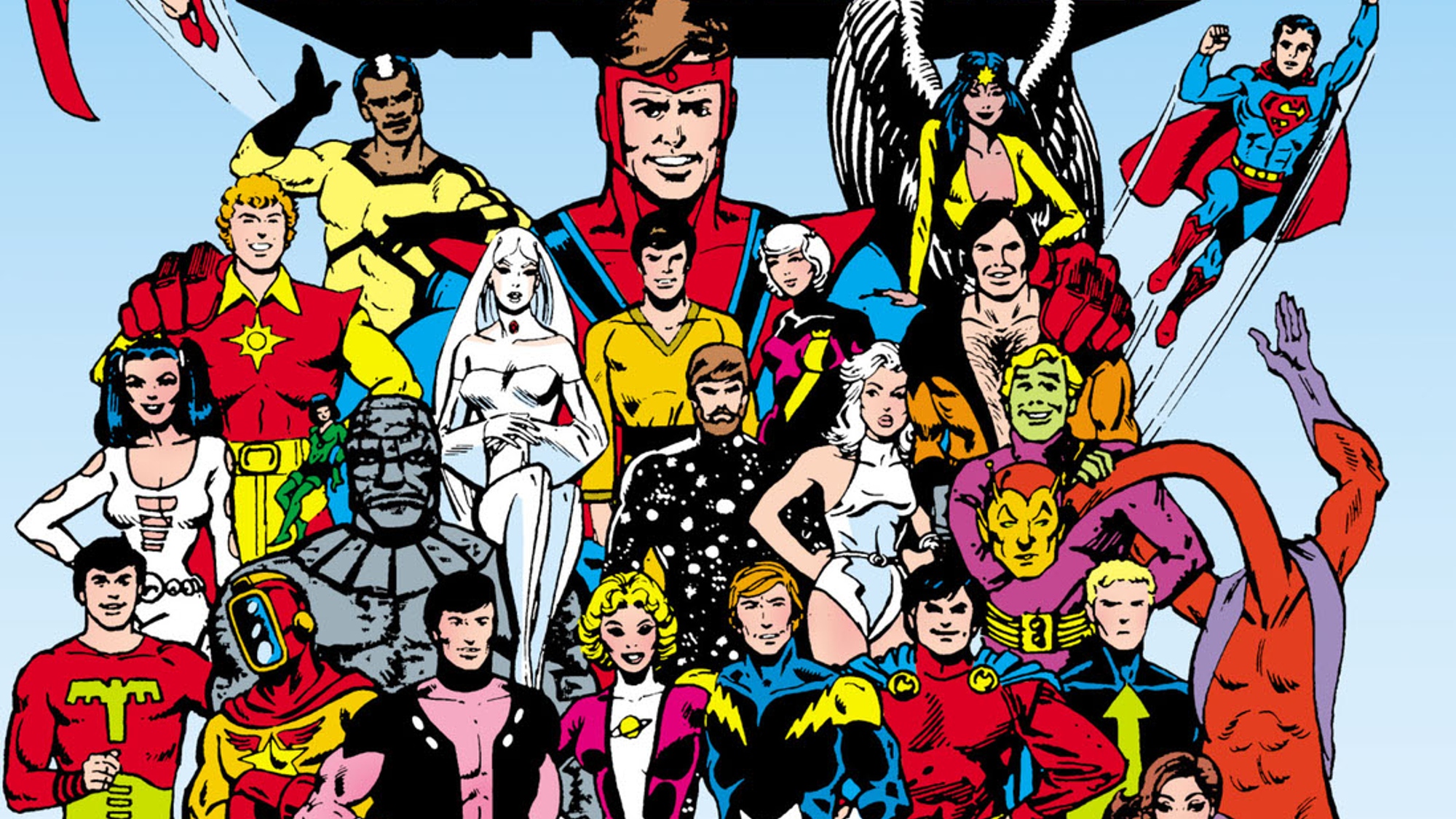Standout tales from the era include The Great Darkness Saga, in which Darkseid reawakens in the 29th century, establishing the New God as the big bad of the DC Universe. An epic Legion of Super-Villains tale saw the Legion against all of their assembled enemies, building to a tragic conclusion. So popular was the team during this period in the 1980s that DC started publishing a second series with glossier, high-end material that could only be bought in comic book shops, one of the first direct market series.
In 1989, the book relaunched with a five-year gap, this time with Keith Giffen taking the lead on art and scripts, aided by Tom and Mary Bierbaum. The Five Years Later (FYL) Legion can be challenging for new readers, as Giffen is at his most abstract in art style and his scripts include unexplained references to deep series lore. Furthermore, the FYL stories have a darkness absent from most stories about the team, replacing the usual utopian setting with a dystopia and leaving the team scattered and scarred. However, it builds to a fantastic climax, which reaffirms the hopeful nature of the Legion of Super-Heroes.
But that wasn’t enough to save the Legion from Crisis on Infinite Earths, which wiped away the existence of the team’s inspiration Superboy. Editors tried a few, frankly confusing, workarounds to deal with the massive change to canon. But after Giffen left the book and the plots became less compelling, DC used its 1994 Zero Hour crossover event to reboot the Legion, the first of many resets.
After Zero Hour, the Legion restarted from scratch with a new origin and tone, under the direction of writers Mark Waid, Tom Peyer, and Tom McGraw, with art by Jeff Moy, Stuart Immonen, and Chris Sprouse. In some ways, the book sought to update the characters for modern readers, giving them uniforms with pouches and replacing the antiquated codenames with hipper versions. Lightning Lad became Live Wire. Shadow Lass became Umbra. Chameleon Boy just dropped the “Boy” because it’s cleaner.
At the same time, the Reboot Legion returned to the original concept, making the team a group of fun-loving teens adventuring in an optimistic future. In this new version of their origin, the team came together at the behest of wealthy businessman R.J. Brande, who wanted an interplanetary team to serve as a beacon for the United Planets.
Some fans rejected this version of the team and its cartoony origins, dubbing it “the Archie Legion” because of its occasional resemblance to Archie Andrews and the Riverdale gang. But this version carried two books throughout the ’90s, Legion of Super-Heroes and Legionnaires, and participated in major DC Comics events such as Final Night (which took inspiration from the Death of Ferro Lad storyline).
If its many reboots and convoluted history has scared you off from the Legion of Super-Heroes, check out this handy introduction to one of the greatest teams in DC Comics history. Read More

